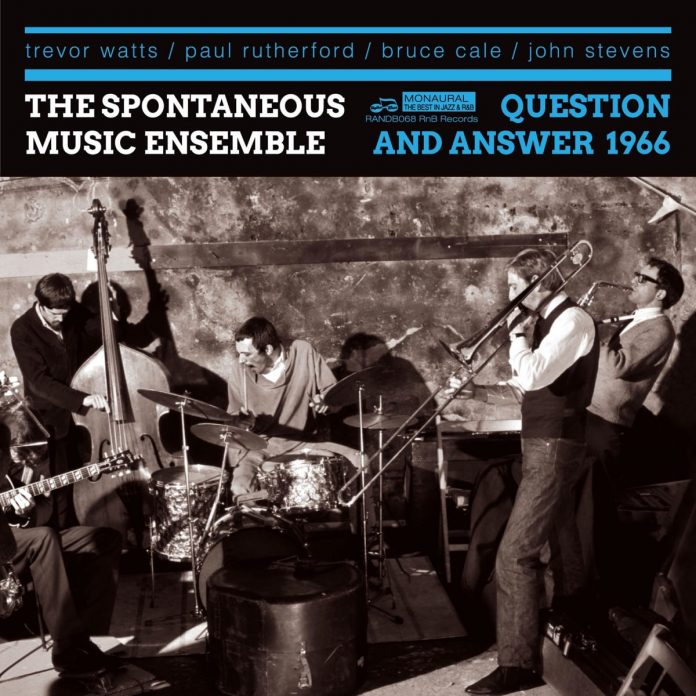The SME was formed by John Stevens in the 1960s because he wanted to escape from what he saw as the clichés and restrictions of modern jazz (in this case, bebop). Trevor Watts on alto and Paul Rutherford on trombone were very much of the same frame of mind, although a few years later their ideas changed somewhat. Bruce Cale was an ideal bassist for this line-up with his exotic, free-flowing bass lines and skill with the bow.
They obtained a regular gig at The Little Theatre Club in Garrick Yard, London and played there regularly. The present double CD has music recorded at a gig they played at a pub in Greenwich with four extended tracks on CD2 having music recorded in an unnamed studio.
The music is fresh and fully improvised except for skimpy themes on a few selections and follows the general approach of the Ornette Coleman quartet, with differences. Pieces like Unknown and Give Me That Old Time Perversion are fragmented, full of stops and starts and changes of tempo, the lines almost fully improvised by all participants. You Can Be Happy is, perhaps the standout track, here, a headlong, swinging tune with a pretty melody which is played first before the solos take off. Following much in the style and approach of Coleman it differs only in the less blues-inflected sound of Watts’ alto, a lack of blue-based honks and Rutherford’s clipped, short trombone phrases. Cale’s bass is fluid and well up to linking with Stevens’ driving, clattering drums. Stevens does have his own personal approach and sound although he has obviously taken from the likes of Elvin Jones, Eddie Blackwell and Billy Higgins. Together this band comes up with a very British form of free jazz, contemporary jazz with a UK accent perhaps.
Unlike Coleman and, to a lesser extent Eric Dolphy, Stevens and company came through the bebop ranks fully before engaging in free jazz or avant-garde experiments. Around the time of these recordings Stevens was working in the Tubby Hayes Quintet, as indeed was Cale. And at one point Stevens deputised for Phil Seamen at Ronnie Scott’s club.
During the interval in Greenwich and the questions and answers session, all the musicians told the audience that they wanted to feel part of the jazz tradition and retain the essence and warmth of jazz. When asked why they still played solos Watts replied that they were working towards not playing them but for now, they wished to play solos.
The music on CD2 is much freer, the only real difference being the better-quality audio on the studio recorded tracks. With Watts playing his Ornette-inspired leaping alto solos and Cale at times appearing to be trying out some Scott LaFaro lines, only Stevens and Rutherford come across as fully innovative and personal in their music. From the distance of 2021 this looks like bold and brave experimental music. And that was mostly what they had in mind, surely?
Discography
CD1: Unknown Title; Give Me That Old time Perversion; You Can Be Happy; Judy’s Smile; Questions And Answers (69.33)
CD2: Themeless Improvisation; Chant; Little Red Head; Day Of Reckoning; Judy’s Smile; Unknown Title; Bruce’s Departure; Peaceful Farewell (67.34)
Trevor Watts (as); Bruce Cale (b); Paul Rutherford (t); John Stevens (d). London, June & August 1966. Last four tracks on CD2 by Watts, Cale & Stevens only.
RANDB 068
















